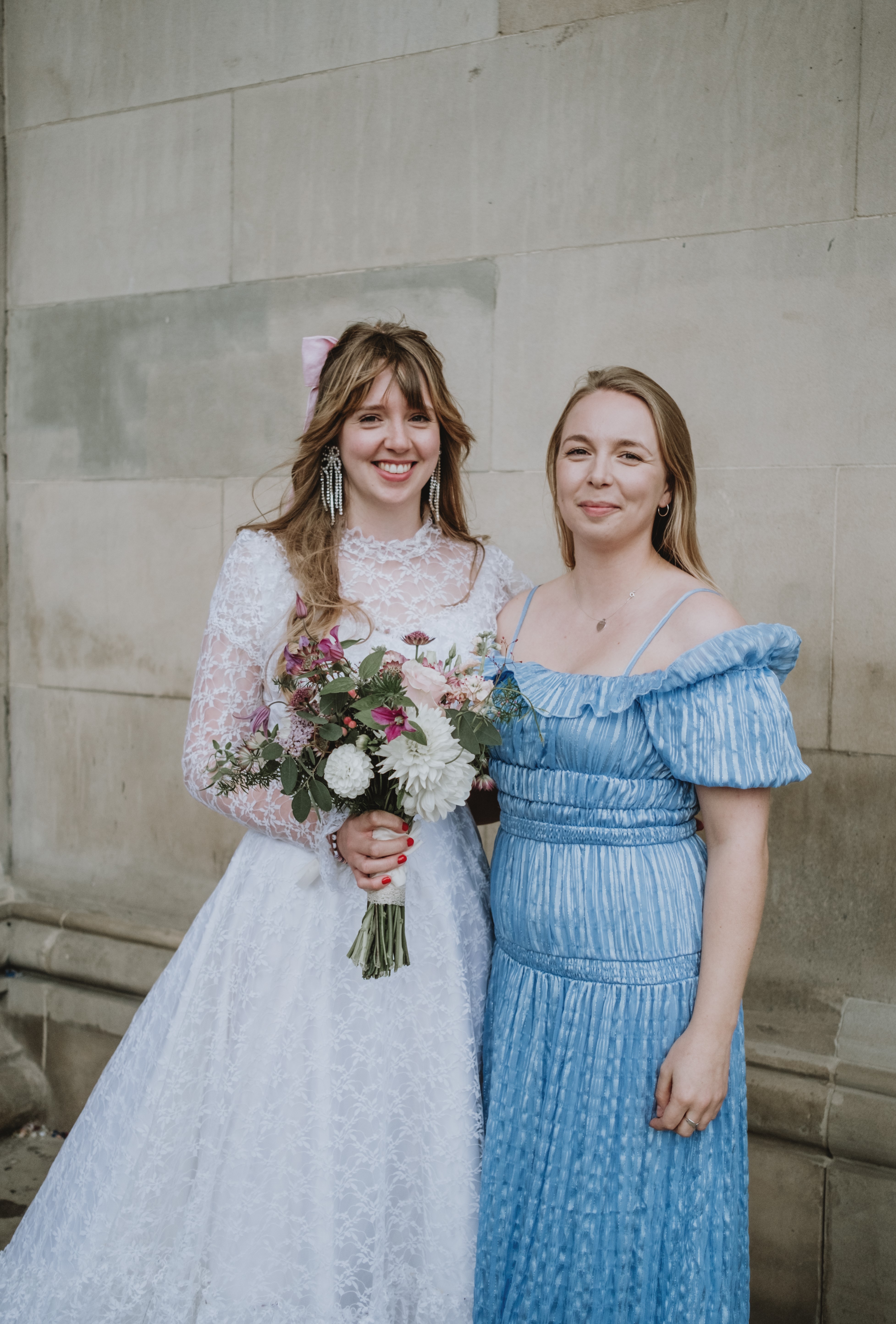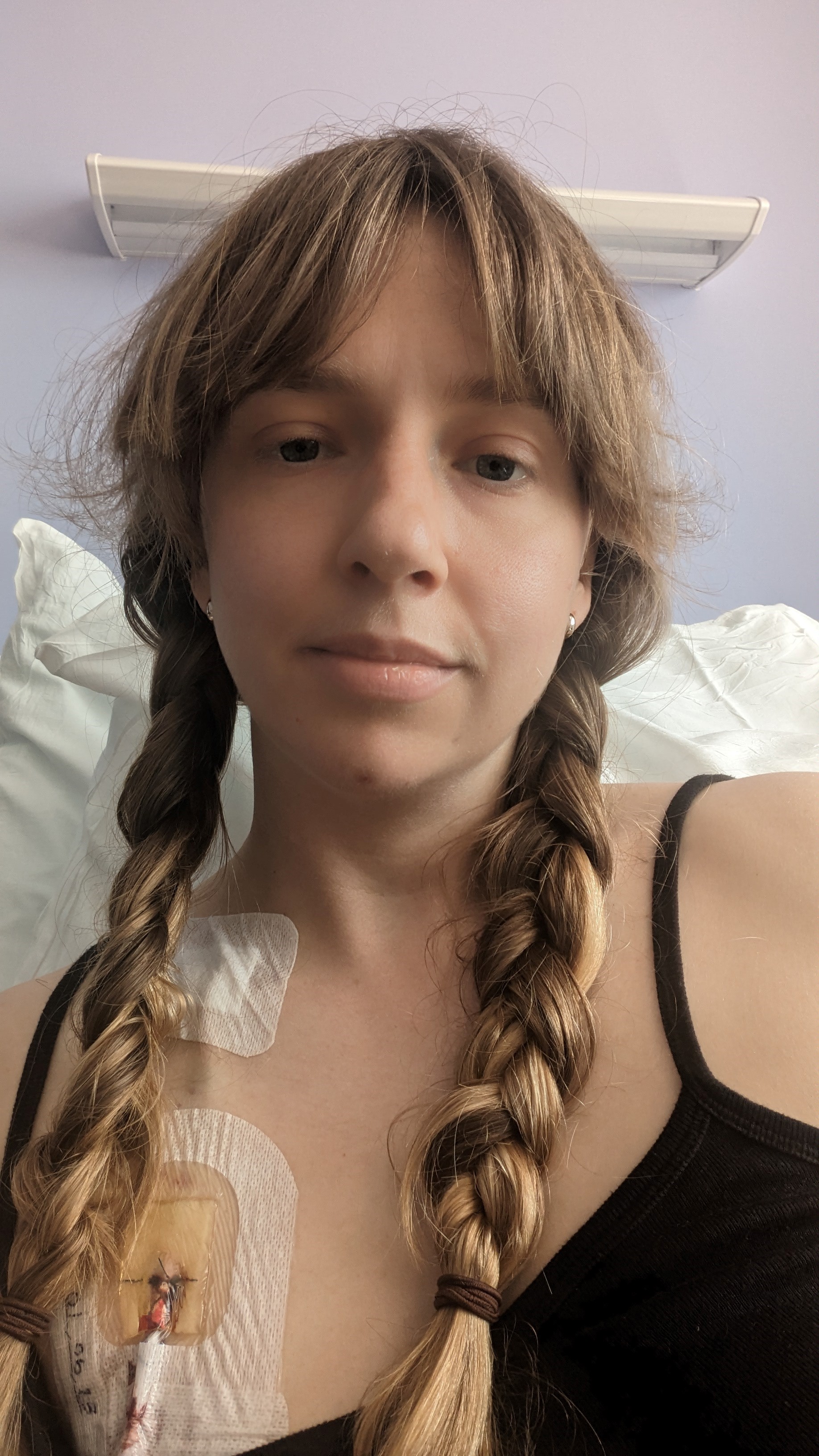"My bruising wasn't me being clumsy but a serious blood condition"
Posted 9th October 2023

In August 2022, mum of one Hannah Newman-Smith, 34, who lives in Liverpool, noticed prominent bruising on her body, initially blaming herself. “I’m a very clumsy person so I didn’t think much of the bruising at first, only that I’d accidentally been bumping into things,” she said.
But after her lip swelled up and her mouth started bleeding after a minor accident at work, she went to her GP. She explains: “I sent selfies to a friend as I thought how funny it was but half an hour later, my lip was really bruised. My GP sent me for an emergency blood test and later that same day, I was in hospital.”
After extensive testing, Hannah was diagnosed with a rare blood condition called aplastic anaemia.
Aplastic anaemia is a condition which can lead to bone marrow failure. It is a serious condition that affects the bone marrow’s ability to produce blood cells, which are essential for bodily functions like immune system function, moving oxygen around the body and blood clotting. For some patients, a successful stem cell transplant is the best chance of saving their life.
After her diagnosis, Hannah was referred to the specialist Haemato-Oncology Team at The Clatterbridge Cancer Centre. The Clatterbridge Cancer Centre is the regional centre for stem cell transplants, using them to treat both cancerous and non-cancerous blood disorders. The centre treats patients from across Cheshire, Merseyside and the Isle of Man. Whilst aplastic anaemia is not cancer, it can require bone marrow transplantation which is also a treatment for some cancers such as leukaemia and lymphoma.
As Hannah’s diagnosis for aplastic anaemia was classed as very severe, it was decided she needed a stem cell transplant as other forms of treatment hadn’t been successful.
Hannah’s transplant involved taking healthy bone marrow stem cells from a donor with matching tissue type (genes), and giving them to her – known as an allogeneic transplant. Transplant teams usually turn to a patient’s siblings when looking for a suitable donor as they have a one in four chance of having the same make up of stem cells. Unfortunately, Hannah’s sister Gemma, 30, wasn’t a match.
“Gemma was so disappointed when it was discovered she couldn’t be my donor,” says Hannah. “But the team at The Clatterbridge Cancer Centre soon found me a number of suitable matches, and one was chosen from abroad.”
Hannah’s donor was a 12/12 match – meaning they were her perfect tissue match, as well as being the same blood type, giving the transplant an increased chance of success and meaning Hannah has less chance of complications from the transplant.
“I know a little bit about my donor,” explains Hannah. “What they’ve done is amazing – I hope one day I’ll get the chance to thank them.”

Hannah received her stem cell transplant on 1st June 2023 at The Clatterbridge Cancer Centre, after several rounds of chemotherapy to prepare her body for transplant. She says: “I felt really well after my transplant with no major side effects. A liver infection meant I stayed in hospital longer than planned but the team at The Clatterbridge Cancer Centre were able to manage that and by day 9 or 10 after my transplant, my blood count started to go up. That was a positive sign.”
Hannah is now over 100 days post-transplant – a crucial step towards recovery. “My diagnosis turned our world upside down. My entire family, including my husband Dan and my mum, have made huge sacrifices to help me during my treatment.
“But I have a great support system around me. I’m feeling well and I hope to keep getting better and getting back to normal over the next few months.”
Consultant Haemato-Oncologist Dr Muhammad Saif is Director of the Stem Cell Transplant Unit at The Clatterbridge Cancer Centre NHS Foundation Trust and is part of the team responsible for Hannah’s care.
He explains: “A stem cell transplant is a very complicated intervention, requiring coordination of multiple teams in the region, national and international donor registries. There are over 42 million people on the donor register worldwide so finding the right person and getting their stem cells here to The Clatterbridge Cancer Centre involves an collective effort.
“We only treat two or three patients a year with aplastic anaemia – it’s a very rare disorder. As well as being a specialist cancer centre, The Clatterbridge Cancer Centre is also the regional facility for non-cancerous stem cell transplants and we are experts in treating blood conditions of this type.
“Hannah came to us with a very severe form of aplastic anaemia and radical treatment was needed in order to save her life. We had to take a calculated risk to push ahead with her transplant whilst she still had serious infection – ideally, a patient would be completely well before transplant. However, in Hannah’s case we made the decision to push ahead anyway as the risks of not doing so were greater. Our priority was getting the best possible outcome for Hannah.
“I’m delighted that she’s doing so well and has responded positively to her transplant. Her recovery is testament to the support of her family as well as the many people behind the scenes who have made her stem cell transplant possible.”
(Photo 1: Hannah (left) and her sister Gemma)
(Photo 2: Hannah during her treatment)
